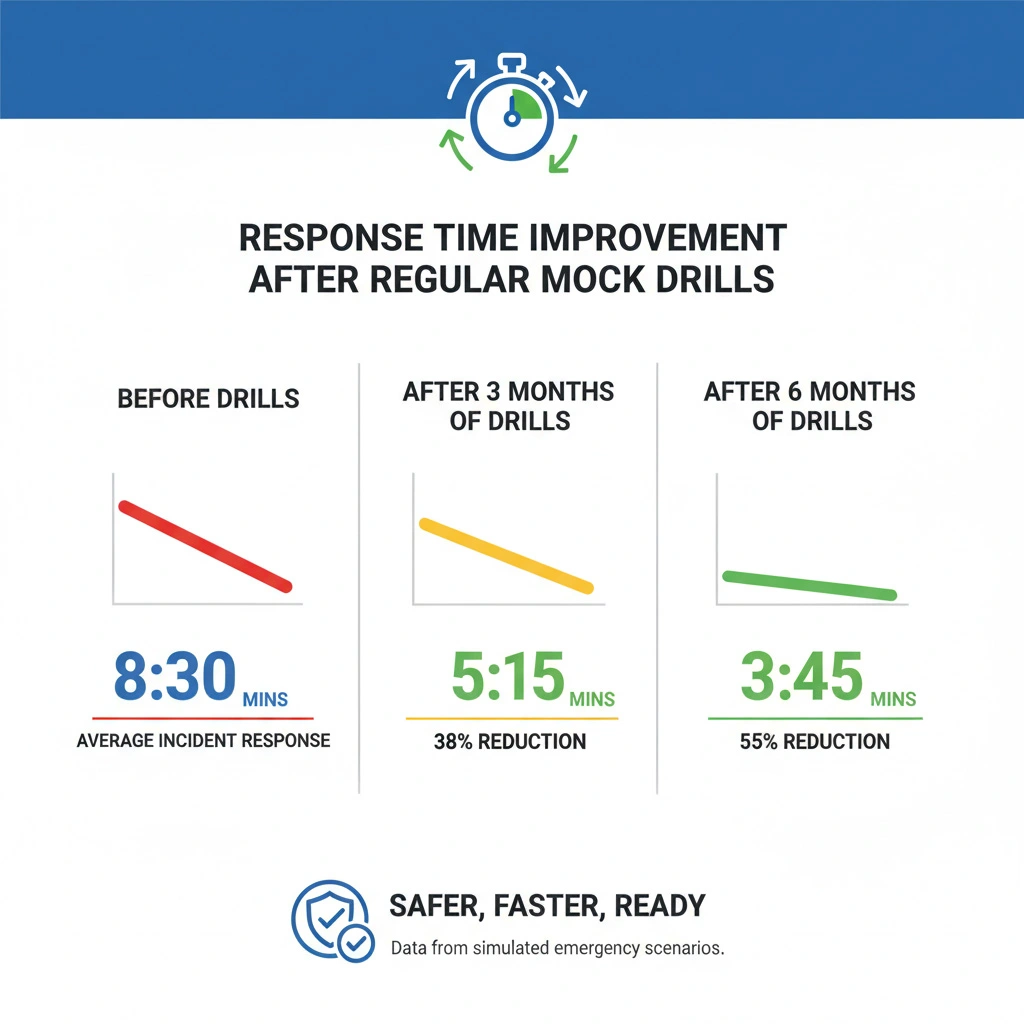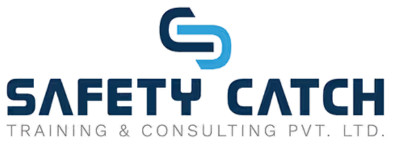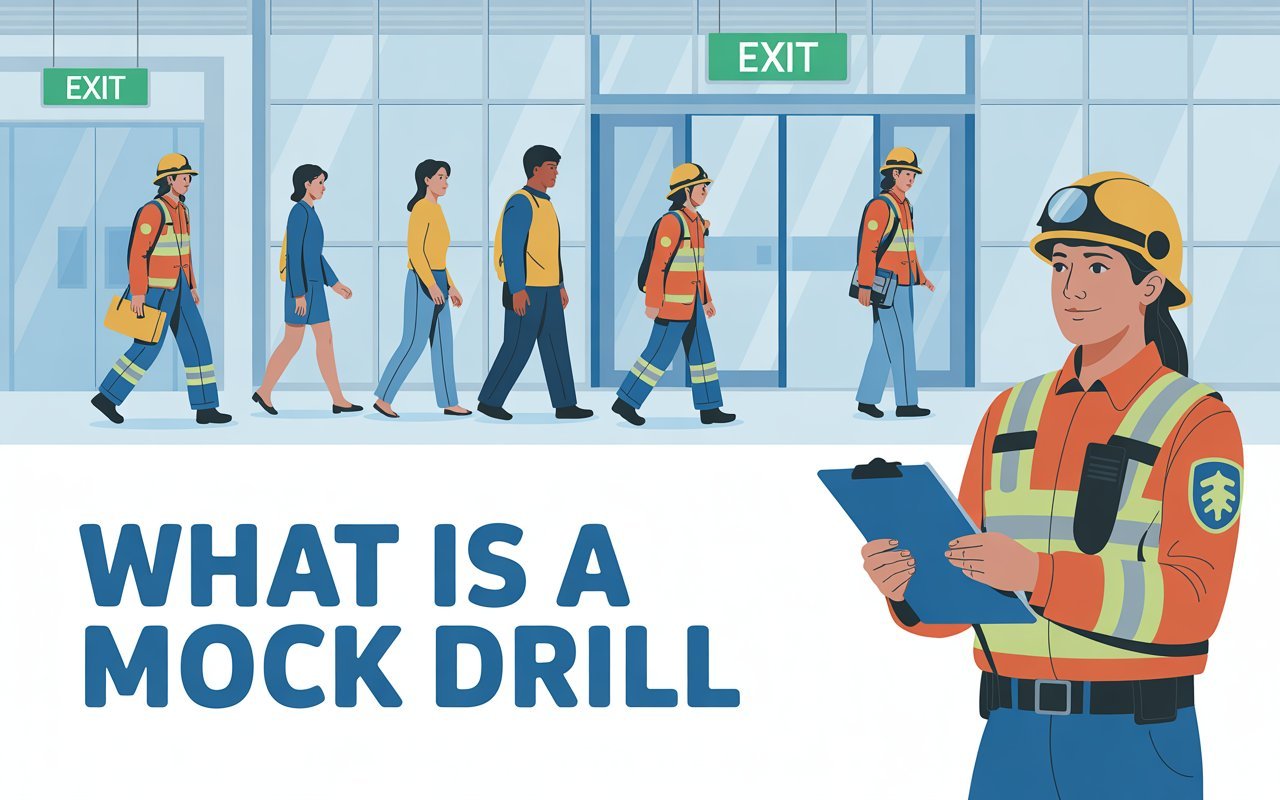What is a Mock Drill?
A mock drill is a planned practice session where people simulate their response to an emergency situation. Think of it as a rehearsal for disasters—whether that’s a fire, earthquake, medical crisis, security threat, or any other dangerous scenario your organization might face.
During these exercises, participants go through the same motions they would during a real emergency: evacuating buildings, taking cover, administering first aid, or securing areas. The key difference? There’s no actual danger. It’s practice under controlled conditions.
But here’s what makes mock drills truly valuable: they’re not just about going through the motions. They’re designed to expose problems in your emergency plans before those problems become fatal. That blocked exit you never noticed? The alarm system that doesn’t reach the warehouse? The confusion about who’s responsible for checking the conference rooms? Mock drills reveal these issues when the stakes are low, so you can fix them before they matter.
Why Mock Drills Matter: The Real-World Impact

Saves Lives Through Muscle Memory
When panic strikes during a real emergency, people don’t rise to the occasion—they fall to their level of training. Regular drills hardwire the correct responses into your team’s muscle memory. Research shows that well-trained individuals can evacuate buildings 40-60% faster than untrained groups.
Exposes Hidden Problems
Paper plans look perfect until you test them. Mock drills reveal the issues you’d never spot in a planning meeting:
- That exit door that’s always blocked by storage boxes
- The fire alarm that half the building can’t hear
- The evacuation route creates bottlenecks on the stairwell
- Communication gaps between departments during crisis response
Reduces Panic and Chaos
Uncertainty breeds panic. When your team has practised evacuation procedures multiple times, they know exactly what’s expected. This familiarity dramatically reduces anxiety and prevents the dangerous stampedes that often cause more injuries than the emergency itself.
Meets Legal Requirements
Most industries face mandatory compliance requirements. Schools must conduct fire and lockdown drills. Hospitals need regular emergency response exercises. Manufacturing facilities require chemical spill simulations. Mock drills aren’t optional—they’re legal obligations that protect both employees and organisations from liability
.
Types of Mock Drills: Which Does Your Organisation Need?

Fire Evacuation Drills
The most common type, fire drills test whether everyone can exit safely before smoke and flames become life-threatening. These drills verify alarm systems work, evacuation routes are clear, and assembly points function properly.
Best for: All organizations, especially offices, schools, hospitals, hotels, and residential buildings
Earthquake and Natural Disaster Drills
These drills teach the “Drop, Cover, and Hold On” procedure during tremors, followed by safe post-quake evacuation when buildings might be structurally compromised.
Best for: Organizations in seismically active regions, coastal areas prone to hurricanes, or tornado-prone zones
Medical Emergency Drills
Cardiac arrests, severe injuries, and sudden illnesses don’t announce themselves. Medical emergency drills prepare non-medical staff to respond appropriately, administer first aid, use AEDs, and coordinate with professional responders.
Best for: Workplaces with limited on-site medical personnel, gyms, schools, and public venues
Lockdown and Active Threat Drills
Unfortunately, necessary in today’s world, these drills prepare people to respond to active shooters or security threats through lockdown, barricade, or evacuation procedures.
Best for: Schools, corporate offices, shopping centres, and government buildings
Chemical Spill and Hazmat Drills
Manufacturing and laboratory environments face unique risks. These specialised drills ensure that proper containment, decontamination, and notification procedures are followed when hazardous materials are released.
Best for: Manufacturing plants, laboratories, chemical facilities, and warehouses storing dangerous goods
How to Conduct an Effective Mock Drill: Step-by-Step Process

Phase 1: Planning (2-4 Weeks Before)
Define Clear Objectives. Don’t just check a compliance box. What specifically do you want to test? Full building evacuation speed? Communication system effectiveness? First responder coordination? Narrow your focus for meaningful results.
Choose the Right Scenario. Base your scenario on the actual risks your organisation faces. A beachfront resort should prioritise tsunami drills over tornado procedures. An oil refinery needs chemical spill expertise more than earthquake protocols.
Assign Specific Roles
- Drill coordinator (overall management)
- Floor wardens (guide evacuations)
- First aid responders (handle medical situations)
- Observers (document what happens)
- Timekeepers (track response speeds)
Prepare Logistics
- Notify emergency services if needed (some drills require coordination with fire departments or police)
- Brief key personnel on drill parameters
- Prepare observation checklists and timing tools
- Arrange backup plans if drill reveals critical failures
Phase 2: Announcement (Optional)
The Announced vs. Unannounced Debate
Announced drills give people mental preparation, which reduces anxiety but may not reflect real emergency responses. Use these for training new employees or introducing new procedures.
Unannounced drills create more realistic stress levels and reveal how people genuinely respond when surprised. Use these once your team has baseline training.
Most effective approach: Start with announced drills, gradually transition to unannounced scenarios as competency builds.
Phase 3: Execution (The Actual Drill)
Trigger the Emergency Activate alarms, send notifications, or have the coordinator announce the scenario over PA systems. Start timing immediately.
Observe Everything Designated observers should document:
- Initial response times (how quickly did people react?)
- Evacuation flow (where did bottlenecks occur?)
- Communication effectiveness (did messages reach everyone?)
- Equipment functionality (did alarms work? Were first aid kits accessible?)
- Role performance (did the assigned personnel execute their duties?)
Maintain Realism While keeping safety paramount, introduce realistic complications when appropriate—blocked exits, “injured” individuals needing assistance, or communication system “failures.” These variables reveal how well plans adapt to imperfect conditions.
Phase 4: Accountability Check
Roll Call at Assembly Points Every person must be accounted for. This seemingly simple step often reveals the most critical failures—departments that evacuated separately, remote workers nobody tracked, visitors who weren’t included in headcounts.
Phase 5: Debriefing (Within 24-48 Hours)

This is where learning actually happens. Gather all participants and ask:
What worked well? Celebrate successes. Positive reinforcement encourages continued engagement.
What didn’t work? Create a no-blame environment where people feel safe reporting problems. The person who got lost looking for an exit just revealed a wayfinding issue that could have been fatal in a real fire.
What surprised us? Unexpected problems are valuable discoveries. Document them thoroughly.
What needs to change immediately? Some issues demand instant correction—malfunctioning alarms, locked emergency exits, and missing safety equipment.
What requires long-term improvement? Other issues need procedural changes, additional training, or budget allocation.
Document Everything: Create a formal report with photos, timing data, observer notes, and an action plan with deadlines. This documentation proves compliance and guides continuous improvement.
Real-World Mock Drill Examples: Learning from Different Industries
Corporate Office: Fire Drill That Revealed Hidden Risks
A tech company’s routine fire drill uncovered that employees working with headphones never heard the alarm. The solution? Visual strobe lights are integrated with the audio alarm system and a Slack-based emergency notification system as backup.
School: Earthquake Drill That Saved Lives
An elementary school in California regularly practised earthquake drills. When a 6.4 magnitude quake struck, teachers and students instinctively followed “Drop, Cover, Hold On” procedures without panic. Post-quake evaluations showed their practised response prevented what could have been dozens of injuries from falling objects and stampeding.
Hospital: Code Blue Drill That Improved Survival Rates
A regional hospital’s medical emergency drills identified that cardiac arrest response times varied wildly depending on shift rotations. After standardising equipment placement and implementing rapid response training for all shifts, their code blue survival rates improved by 18%.
Manufacturing Plant: Chemical Spill Simulation
A chemical plant’s hazmat drill revealed that emergency shower locations weren’t known by third-shift workers and spill containment kits had expired materials. The drill findings led to facility-wide retraining and quarterly equipment audits.
Common Mock Drill Mistakes to Avoid
The “Check Box” Mentality
Running drills just to meet compliance requirements without a genuine evaluation wastes everyone’s time. Each drill should generate actionable improvements.
Overly Scripted Scenarios
When drills become so predictable that people know exactly what will happen, you’re testing memorisation, not response capability. Introduce variables to keep drills realistic.
Skipping the Debrief
The drill isn’t the lesson—the debrief is. Rushing back to work without thorough analysis means missed opportunities to improve.
Ignoring Accessibility Needs
Your evacuation plans must account for individuals with mobility challenges, visual or hearing impairments, and cognitive differences. Test these accommodations during drills.
Infrequent Practice
Annual drills help with compliance but don’t build true preparedness. Quarterly or monthly drills (even abbreviated ones) maintain response readiness much more effectively.
How Often Should You Conduct Mock Drills?
Minimum legal requirements vary by industry and location:
- Schools: Typically 8-12 fire drills and 4 lockdown drills annually
- Workplaces: OSHA recommends testing emergency action plans “regularly”
- Healthcare facilities: The Joint Commission requires twice-yearly emergency drills
- High-risk industries: Monthly or even weekly drills for specific hazards
Best practice recommendation:
- Major full-scale drills: Quarterly
- Department-level tabletop exercises: Monthly
- Individual skills refreshers: Ongoing
Remember, effective drill programs mix announced and unannounced exercises across different scenarios throughout the year.
Mock Drills in the Digital Age: Technology Integration

Modern mock drills leverage technology for better outcomes:
Mass Notification Systems: SMS, email, and app-based alerts ensure everyone receives emergency information instantly, even in loud environments.
Digital Tracking: RFID badges or mobile apps can automatically verify who evacuated and who remains unaccounted for, eliminating manual roll call errors.
Virtual Reality Training: VR simulations allow people to experience high-stress emergency scenarios safely, building decision-making skills without physical risk.
Data Analytics: Track drill performance over time, identify trends, and measure improvement with quantifiable metrics.
Live Streaming and Recording: Video documentation helps review procedures, train absent employees, and analyze crowd flow patterns.
Creating a Culture of Preparedness
Mock drills succeed when they’re part of a broader safety culture, not isolated events. Here’s how to build lasting preparedness:
Make Safety Everyone’s Responsibility: Encourage employees to report safety concerns, suggest improvements, and take ownership of emergency preparedness.
Continuous Learning: Follow each drill with clear communication about lessons learned and changes implemented. Show people their participation drives real improvements.
Leadership Participation: When executives and managers actively participate in drills (not just observe), it signals that preparedness truly matters.
Recognition and Incentives: Acknowledge departments or individuals who demonstrate exemplary emergency response. Positive reinforcement sustains engagement.
Frequently Asked Questions About Mock Drills
How long should a mock drill last? Fire evacuation drills typically take 15-30 minutes from alarm to final headcount. More complex scenarios like active shooter or chemical spill drills may run 1-2 hours including setup and debriefing.
Do we need to contact emergency services before conducting drills? For fire drills where alarms might trigger automatic fire department dispatch, yes—notify them in advance. For internal scenarios without external alarm systems, notification usually isn’t required but check local regulations.
What if someone refuses to participate in a mock drill? In most jurisdictions, emergency drill participation is mandatory when legally required drills are conducted. Document refusals and address them through HR channels, as non-compliance could create liability issues.
Can mock drills be traumatic, especially for lockdown scenarios? When conducted insensitively, yes. Use trauma-informed approaches: provide advance notice when possible, allow opt-outs for individuals with relevant trauma history, emphasize empowerment over fear, and offer mental health resources afterward.
How do we conduct mock drills in remote or hybrid work environments? Digital drills test communication systems, accountability procedures, and remote workers’ knowledge of home safety. Use virtual tabletop exercises to practice decision-making and communication protocols.
Conclusion: From Practice to Protection
Mock drills aren’t about creating fear—they’re about building confidence. When your team has practised emergency procedures enough times, they develop the calm competence that turns potential disasters into manageable situations.
The difference between chaos and coordinated response during a real emergency comes down to preparation. Every mock drill you conduct strengthens that foundation, closes knowledge gaps, and ultimately protects the people who depend on your organisation’s safety systems.
Don’t wait for a real emergency to discover what doesn’t work. Start planning your next mock drill today.

